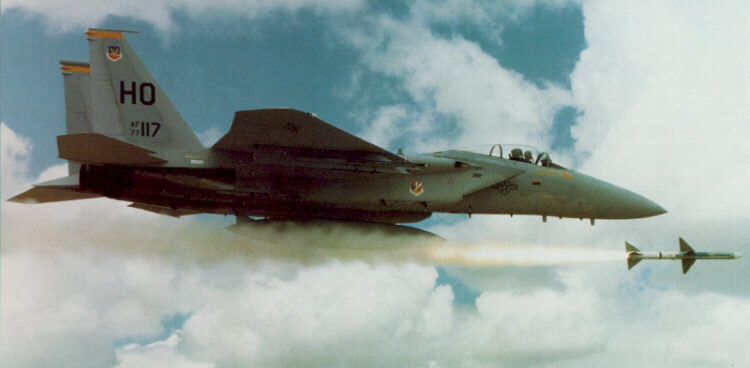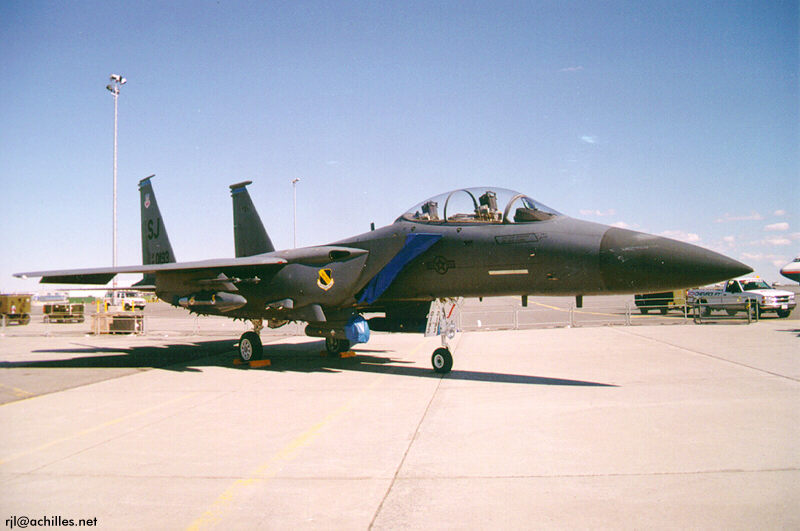|
|
|
![]()
F-15 EAGLE

The F-15 Eagle is perhaps the most capable and versatile fighter of the 1980s and 1990s, serving in large numbers with the United States Air Force, together with the air forces of Israel, Saudi Arabia and Japan. The design of this classic fighter dates back to 1965 when the USAF required a new long-range air superiority fighter. The FX programme led to the development of the F-15A which made its first flight on 27 July 1972, and during the following year an order was placed for the F-15A including a quantity of twing-seat, dual-control TF-15As (later redesignated F-15B). A total of 355 F-15As were constructed together with fifty-seven F-15Bs.
Operational service began with the first deliveries to Tactical Air Command's 1st Twctical Fighter Wing at Langley AFB, Virginia on 9 January 1976. The first Eagles to be deployed overseas joined USAFE at Bitburg AB in Germany, during April 1977. During 1974-5 McDonnell Douglas modified an F-15A airframe to capture a series of time-to-altitude climb records. The suitably stripped airframe named 'Streak Eagle' weighed 1,800 lb less than a standard F-15A and made eight successful record climbs, the most impressive being to 98,425 feet in 207.8 seconds from brake realese on 1 February 1975.
From June 1979 the F-15A was replaced on the McDonnell Douglas production line by the F-15C (and twin-seat F-15D derivative). The 'Charlie' model is an improved version of the basic Eagle, with provision for conformal fuel tanks. Some 410 single-seatand sixty-one twin-seat aircraft were produced for the USAF. Earlier F-15 A/B models were gradually assigned to Air National Guard and Air Force Reserve units as obsolete F-100, F-101 and F-106 aircraft reached retirement. Whilst still operational with TAC, som aircraft were modified to carry the ASAT anti-satellite weapon which was later cancelled before reaching the production stage, and these aircraft remain modified for the now defuct system.
The F-15C/D is likely to be the subject of further improvement programmes and the USAF is considering a much-improved design (F-15XX) as a cheaper alternative to the F-22, should the latter programme be terminated. The older F-15A/B fleet will reach the end of their projected twenty-two-year lifespans shortly which will require the USAF to consider refurbishment options or retirement. The F-15 has also become a formidable strike/attack platform, developed from the twin-seat F-15B demonstrator, during the early 1980s. The first production F-15E Strike Eagle (photo below) has largely replaced the F-111 in USAF ACC (Air Combat Command) service.
